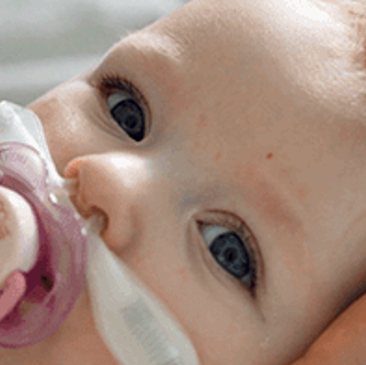Resources and Information


Click here to request cards for your Connecticut based ED or EMS Agency.
I-Spy Cards

Vital Sign Cards

Pediatric Assessment Triangle



Please visit our Federal Partners and explore a vast collection of pediatric resources!
https://emscimprovement.center/
Formed in 2016, the Emergency Medical Services for Children Innovation & Improvement Center (EIIC) leverages quality improvement science, the experiential knowledge of its co-lead organizations—The University of Texas at Austin Dell Medical School and University Hospitals Rainbow Babies and Children's, as well as partners at Duke University School of Medicine, The Lundquist Institute, and Yale University School of Medicine—and the expertise of multiple professional societies and federal organizations to improve health care outcomes for children in emergency settings. The EIIC is part of the Emergency Medical Services for Children program.
Our mission: The mission of the EIIC is to optimize outcomes for children across the emergency care continuum by leveraging quality improvement science and multidisciplinary, multisystem collaboration.

Looking for resources on child abuse?
TEN4-FACESp Abuse Screening Tool
How do I contact a CT Team?
DART TEAM (Yale-New Haven Children's Hospital)
DART@yale.edu
203-688-2468
On-Call for Medical Providers 24/7/365
SCAN TEAM (CT Children's Hospital)
860-837-5890
On-Call for Medical Providers 24/7/365
ToolKits
Please visit the EIIC's Pediatric Education and Advocacy Kit (PEAK): Child Abuse page here for toolkits and resources!
Please check out the free Child Protector App!
The Child Protector APP will assist medical personnel when evaluating children who may have been physically abused.
This app features:
- Realistic animations of how childhood injuries may happen, both accidental and inflicted. Injury types include bruises, burns, head injuries, fractures, and abdominal injuries.
- Decision trees for use in determining the likelihood of abuse, further investigative needs, and further medical testing for each of the injury types
- A library of over 100 animations with accompanying narration that depict the mechanisms of different types of injuries for children
- Descriptions of medical findings, the meaning of those findings, and how they can be used in investigative, legal, or court processes
- History-taking tools for both investigators and medical professionals


Visit the Pediatric Pandemic Network for more pediatric resources
https://pedspandemicnetwork.org/
Ready. Prep. Go!
https://pedspandemicnetwork.org/ready-prep-go/origins
Ready. Prep. Go!, a podcast from the Pediatric Pandemic Network, features compelling conversations with emergency, disaster, and preparedness subject matter experts and those on the frontlines. Guests share their transformational stories and invaluable lessons learned from their experiences.
New episodes drop every other week on Tuesdays.
Listen wherever you get your podcasts!

Examples of carts and checklists

Examples of reccomended Pediatric EMS Supplies

With the current pediatric respiratory surge, we are all seeing patients in our respective EDs for much longer than we may be used to.
Please see the recorded zoom and slides below of the Forum CT-EMSC Executive Committee held to review the current state of the surge, usage of HFNC (High Flow Nasal Cannula) in children and a discussion on a HFNC Guideline to bring back to your ED.

Looking for resources for RSV, Influenza, or Flu? What about how to handle pediatric surge?
Please visit our partner at the EMSC Innovation and Improvement Center (EIIC) for resources to help manage pediatric surges at your agency or hospital! Click Here

CTEMSC is available to provide training to your group.
Please email megan.petrucelli@ynhh.org for more

The American College of Physicians (ACEP) offers a free online resource for running your own low-fidelity simulations using SimBox.
Free online simulation for everyone!
Online resources include:
- Step-by-step guide on how to facilitate a simulation
- Use to augment in-person, hybrid, or distance simulation
- Low to no technology is required
Click here for more information.




Tools and Resources for managing behavioral health patients.
De-escalation Tip Sheet
Tips_for_Providing_Safe_Structure for Pediatric Behavioral Health Patients
EIIC: Emergency Department Management of the Agitated Pediatric Patient

Engaging family representatives in state EMSC Programs.
FAN members contribute to their state program activities in numerous ways, including, but not limited to: serving as members, chairs, and co-chairs of their state EMSC advisory committee; coordinating special community outreach projects; assisting with the development and implementation of EMSC policy objectives; and helping to plan, present, and promote educational offerings within their state. Find out more about this program here.


Find out what happens at our Quarterly Meetings.
Please see our Meeting Minutes below.
01.03.25 Advisory Board Minutes
12.06.24 Advisory Board Minutes
Meeting Minutes - 2nd Annual PECC Conference 2024 PECC Conference Slides
10.04.2023 Quarterly Meeting Minutes
2022 3rd Quarter Meeting Minutes
Please contact Megan Petrucelli, CTEMSC Program Coordinator with any questions.


